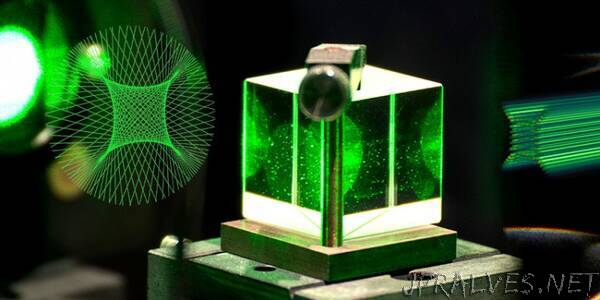
“A publication by researchers led by physicist Prof. Cornelia Denz is among the world’s 30 most groundbreaking papers of 2020, according to the journal Optics & Photonics News. In its special annual end-of-year issue, the journal selects the research highlights of the past year in the fields of optics and photonics.
A committee of experts reviewed more than 115 international studies from 2020 and selected the best papers from them. The WWU research group “Nonlinear Photonics” headed by Cornelia Denz at the Institute of Applied Physics of the University of Münster had already been represented in the list with several publications in previous years.
This year, the team receive a special honor: although there is no standout among the 30 selected papers, the team’s work was honored with the cover of the issue, making it the secret winner of this year’s selection.
About the winning study
Customized focal beams inspired by nature
Laser-based material processing or high-resolution microscopy have already reached the nanoscale. They therefore require light beams that do not change as they propagate. This poses a major challenge because light beams typically broaden during propagation (which is called diffraction).
Cornelia Denz’s team has produced such urgently needed, so-called propagation-invariant or non-diffracting light fields. They are robust against disturbances and exhibit self-healing properties, greatly improving new applications such as light sheet microscopy or laser-based cutting, milling or drilling with high aspect ratios. Their robust propagation reduces beam distortion and minimizes manufacturing errors.
To achieve this, the team has realized synthetically a special class of non-diffracting beams for the first time. To do so, the physicists exploited light structures seen in rainbows or in the transmission of light through drinking glasses: spectacular beam structures called caustics, representing bright focal lines. The team developed a far-reaching method of using these caustics as a basis for creating arbitrary structures. This allows them to design, customize and fabricate structured caustic light with arbitrary transverse shapes, making them propagation invariant. “Any desired intensity structure can be specified simply by bounding it with caustic lines and thus transforming them into propagation-invariant light,” explains co-author Cornelia Denz of the Institute of Applied Physics at WWU.
The team has demonstrated various propagation-invariant shapes such as lines, parabolas or astroids, but also complex shapes such as letters. These intensity structures are robust against disturbances, which could make them attractive for secure high-dimensional quantum communication.
The team’s study results were recently published in the journal Nature Communications. This publication was the basis for selection to the 2020 Best List.
Funding
The study received funding from the National Science Foundation, the Excellence Initiative of the University of Aix-Marseille, and the Universities of Bristol, Birmingham and Münster.
Original publication
A. Zannotti, C. Denz, M. A. Alonso, M. R. Dennis (2020): Shaping caustics into propagation invariant light. Nature Communications; DOI: 10.1038/s41467-020-17439-3”
